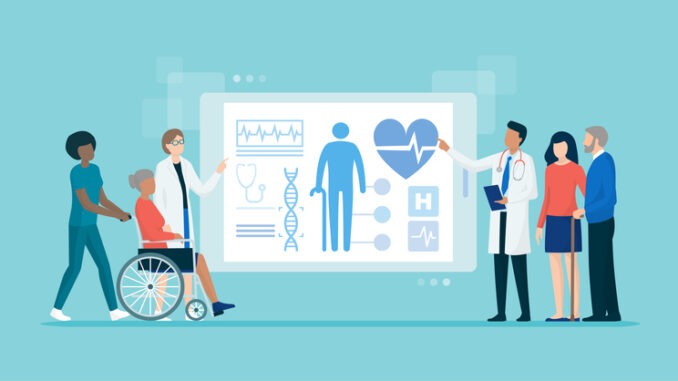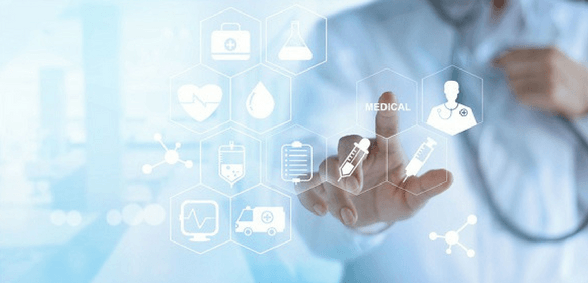
Mike Farrar, a former chief executive of the NHS Confederation, and an advisor at Visionable, shares eight practical steps on how technology can help with stroke prevention and management
CREDIT: This is an edited version of an article that originally appeared on Digital Health
Take stroke patients directly to specialist units
There is strong evidence that taking patients directly to hyperacute stroke units via ambulance will improve their outcome. A faster emergency response to stroke reduces mortality and disability and so we need to empower paramedics to make the decision as to whether to take a patient to a hyperacute stroke unit or to A&E.
Technology can play a central role in supporting paramedics to do this effectively – for example, video conferencing telemedicine apps can be used effectively to link paramedics directly to specialist stroke consultants via tablets. These can then also be used to enable paramedics to access a patient’s medical record enabling further evidence-based decision-making. This is already happening in the East of England through the NHS East of England Stroke Telemedicine Partnership, with demonstrable success.
Use technology to predict people at risk, and avoid relapse
The risk of recurrent stroke is 26% within five years of a first stroke and 39% by 10 years – yet many of these strokes could be prevented if we adopted simple prevention techniques. Electronic health records have the potential to provide additional information that could be used to predict stroke risk and trigger early intervention, yet this is often still not utilised to its full potential.
Thinking beyond recurrent strokes, there are also opportunities for prevention initiatives in the community. The Innovation Agency, in partnership with the Stroke Association, recently launched its successful Atrial Fibrillation Ambassadors initiative in a bid to prevent strokes. Volunteers were recruited to use portable ECG devices to identify people who may have atrial fibrillation. The initiative, being carried out in the North West coast region, is predicted to identify over 1,000 new cases of atrial fibrillation during the initial two-year campaign which could prevent up to 34 strokes and save more than £750,000 in associated health care costs.
Adopting a multi-disciplined approach
In a lot of cases, stroke patients will have multiple conditions that all need managing. Technology can help to facilitate joined-up care, and enable multi-disciplinary teams (MDT) to work more effectively in the co-management of a patient. It’s now very straightforward to host MDT conference calls rather than each consultant treating the individual conditions in isolation. This is something that has proven to be a success at the North West London Cancer Network where, using Visionable’s technology, they were able to allow any clinician to join from anywhere while also allowing participants to simultaneously transmit large amounts of clinical information.
Continuous monitoring of those after stroke to predict further episodes
Technology can help with the identification of those at high risk and, in introducing regular monitoring through regular check-ups, help to prevent further episodes. A quarter of all strokes annually, or nearly half of recurrent strokes, could be prevented through simple blood pressure control. The technology exists for patients to continuously monitor their blood pressure from home, yet this is not routinely offered. Additionally, as technology evolves, there is the potential for this to expand beyond the use of wearables into the territory of smart homes that can facilitate the remote monitoring of things such as gait and balance.
Provision of wrap around support for individual patients
Individuals with high vulnerability and complex needs following stroke or brain injury will have wider support needs during rehabilitation; however, patients tend to get referred back to the GP. While there are often well-established MTD approaches during the acute phase of recovery, this is often not the case following discharge; the GP will often assume sole responsibility for ongoing care management, relying on the patient to report any deterioration. This doesn’t need to be the case – there are lots of opportunities for additional support from, for example, voluntary organisations providing support to families and carers, charity services and community care. The technology is available to link all of this support, to ensure that information and data is shared and where the patient can also see the support that is available to them. Which leads me on to point 6…
Patient-orientated support for people post brain injury
Rehabilitation is crucial – and not only in helping to achieve the best possible quality of life for a patient post brain injury or stroke. While we are good at providing the physical care that a patient needs, we are less so at meeting their emotional and mental health needs. This is still very much fragmented, and it shouldn’t be. We should take learning from the Maggie Centres which provide holistic support for cancer patients with dedicated cancer support specialists, benefits advisors, nutritionists, therapists and psychologists.
Patient-led care – putting patients in charge of their well-being
Many of a patient’s vital signs can now be collected remotely and recorded digitally. Patients are often happy to take responsibility for their own monitoring – and in fact they want to do this due to the fear of a recurrent stroke. Patients often have a better understanding of their own conditions in that they know when there are subtle changes. When they are educated in the use of monitoring technology, and the data it is producing, they are often motivated to stick to the monitoring schedule. Data from Mount Sanai in the United States revealed that 80% of the patients that were taking part in its blood pressure monitoring programme presented issues which could then be managed.


Be the first to comment